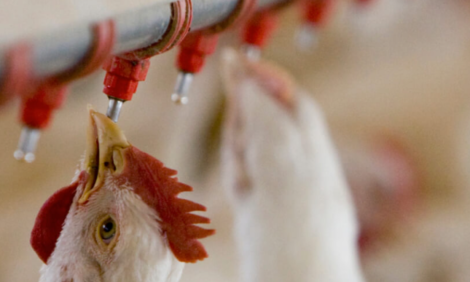



H7N9 in China: The Worries Continue
ANALYSIS - The AH7N9 avian influenza outbreak that affected humans this year in China continues to worry the scientific community, as evidenced by the continuous publication of studies on the outbreak, writes Chris Wright, Senior Editor, for the Poultry Site.At the same time, the Chinese poultry sector is still having trouble and continues to recover from the crisis caused by avian influenza. The Chinese government just announced that it is giving the industry 300 million yuan (48.5 million dollars) more to help the poultry industry in its recovery. This is added to the 900 million yuan that has already been given to the industry. Aside from the central government subsidies, ten provinces have established preferential policies to support the poultry industry.
The latest figures from the China Animal Agriculture Association show that the industry has recorded more than 40 billion yuan in losses since the H7N9 outbreak in March. The losses resulted from the culling of poultry that the government ordered and also due to the lack of confidence in the poultry industry by consumers.
Commercial poultry, particularly chickens, was blamed for the outbreak, although the actual source of the outbreak remains unknown. What is clear is that in poultry the H7N9 virus was of low pathogenicity and never mutated to be a highly pathogenic virus.
The unusual aspects of this new virus are, in fact, what so worries the scientific community. That is the reason why almost on a weekly basis, a new study is published about this outbreak which resulted in 133 people becoming ill, with 38 of those infected dying.
What is clear so far is that there was no sustained human to human transmission of the virus, with the primary cause being that the people affected had some sort of contact with live poultry (although this was never confirmed one hundred per cent).
The P Word
The scientific community which works with influenza viruses is always looking for those viruses with the potential to cause a pandemic, and this new H7N9 virus seems to have that potential. The assumption about pandemic viruses is that they will be a new virus mutation that can be easily transmitted to humans, and because they are new, humans will not have developed resistance to them.
The ongoing research has been of three basic types: virus characterization, who was infected (and why) and how this virus affects animals.
The research to see how the respiratory tract is affected has been done with ferrets and mice. Ferrets are used because they have a very sensitive respiratory tract.
A Japanese study found that the Chinese H7N9 virus caused more mortality in mice than in ferrets and was more capable of replicating in the lungs of mice in comparison to the other avian and human influenza viruses studied. The H7N9 virus easily infected mice, which is not the case with human influenza viruses, unless there is prior host adaptation.
A study published in Nature by CDC (US Centers for Disease Control) researchers found that the H7N9 viruses are capable of causing infection in a direct contact animal model, but the viruses would need to undergo additional adaptation to spread more easily by droplets or through the air.
The most important finding of the CDC study, as well as other studies, is that person to person transmission, especially through respiratory droplet transmission, through coughs or sneezes, is a necessary precondition for the virus to become capable of causing a pandemic. Therefore, as of now, the Chinese H7N9 influenza virus presents no “clear and present” pandemic danger, just a great deal of concern.









